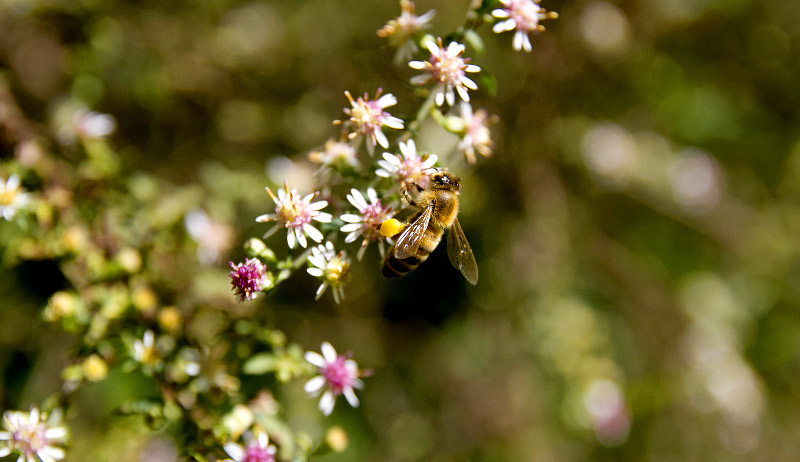
May is the month for beekeepers. Many regions around the country are experiencing the end of the cold season, and with it, the last frost dates. The strength and weaknesses of surviving hives is shown in full light. If they’re strong and you’re a bit too slow, they’ll grow quickly and bees will swarm right under your nose. Beekeeping is not a skill that requires extensive work throughout the year, but it does require impeccable timing. May is the month of timing. If you get your timing right this month, it sets the tone for the whole year. Here are four apiary chores you’ll want to perform this month to get a good start to the year.
1. Swarm Prevention
When a colony of bees casts off a swarm, several thousand bees take the original, fertile queen away from the “mother” hive in search of a new home. This is the honeybee’s natural way of propagation. While in flight, and while clustered in their landing spot, a swarm is docile and gentle. With no honey, no brood and no home to defend, they’re the least threatening they will likely ever be in their lifetimes. Although it gets a bad rap, swarming is a wonderful thing. Most importantly, it’s an indication that the colony is strong, and we should always rejoice in strong, healthy honeybee populations, even if they are an inconvenience to the beekeeper.
However, there are a few apiary chores you can perform to keep your bees close to home. Conduct regular inspections to check for swarming activity. Cramped bees, honeybound bees or a colony that has grown out of the confines of the hive you’ve provided are all more likely to swarm. Add additional supers, giving them plenty of space to keep them busy and keep the queen moving upwards. Once you see swarm cells, however, the plan is in motion. You may be able to thwart it by removing said cells, or you can continue on with the tasks for the month.
2. Regular Inspections
Swarm prevention is usually the spring beekeeper’s main concern, but it’s not necessarily the most important one. It’s critical to conduct regular hive inspections during the month of May to monitor levels of varroa mites, stores of honey and types of honey coming in, and overall growth. Of course, you’re also monitoring for signs of swarming (such as those above), and being proactive by giving your strong hives plenty of space to keep them interested in sticking around.
Feeding usually isn’t necessary at this time of year, but weaker hives and nucleus colonies may need a leg up—a colony can still starve within a few short weeks at the tail end of winter, especially if you live in a region where April and May are still rather cold. If you find yourself feeding bees, remember that it’s always best to give them their own food: honey. Sugar syrup is great in a pinch, but always keep around a bit of honey to give to hungry bees.
3. Swarm Preparation
If you feel comfortable catching swarms, now is a wonderful time to prepare to be on the hunt for wayward bees. With prices for bee packages well over $100 this year, a swarm of bees is a wonderful way to add to your apiary and save homeless honeybees. Many hobby-kept honeybee hives are located in residential, suburban and even urban areas, and when a swarm takes off from one of them, they are unlikely to find good lodging. Instead, they will take up residence wherever it suits them in a 3-mile radius—think your neighbor’s grill, the corner brownstone’s attic space, an old garage or chicken coop.
Have swarm gear at the ready. Be prepared with swarm traps and nucleus boxes in your arsenal, and better yet, keep them in the car with you, should you get “the call.” Also have protective clothing on hand, such as a veil, jacket and gloves, in your vehicle. Remember to advertise your services early, giving your phone number and other contact information to as many local businesses as you feel comfortable. Set up swarm traps in your area and around apiaries—with permission from the beekeeper of course.
4. Repair Or Buy New Equipment
Ideally, you’ve purchased or replaced your worn and broken equipment by now, but it’s never too late to have new woodenware standing by. Give a thorough inspection to any pieces not currently in use, and cull the broken and diseased equipment. Popular items, such as medium and brood frames with wax, medium and brood boxes, and nucleus boxes may be on backorder due to the demands of the season, so speak to your supplier soon.
May is an absolutely thrilling time to be a beekeeper. It’s a joy to watch the world wake up, turn green, and revel in the blossoms all around us, knowing they provide nourishment and sustenance for our charges. With a few apiary chores out of the way, you’ll be able to enjoy a season filled with pollination and honey.




